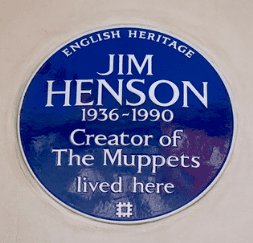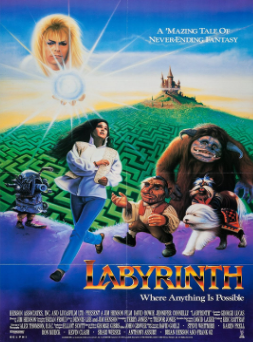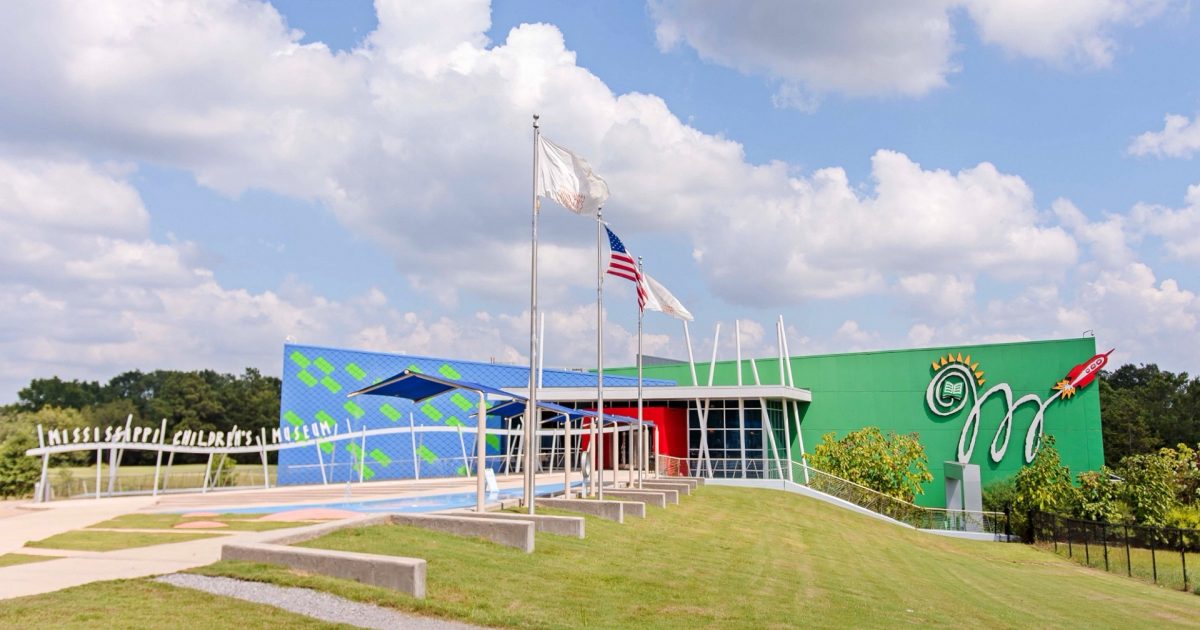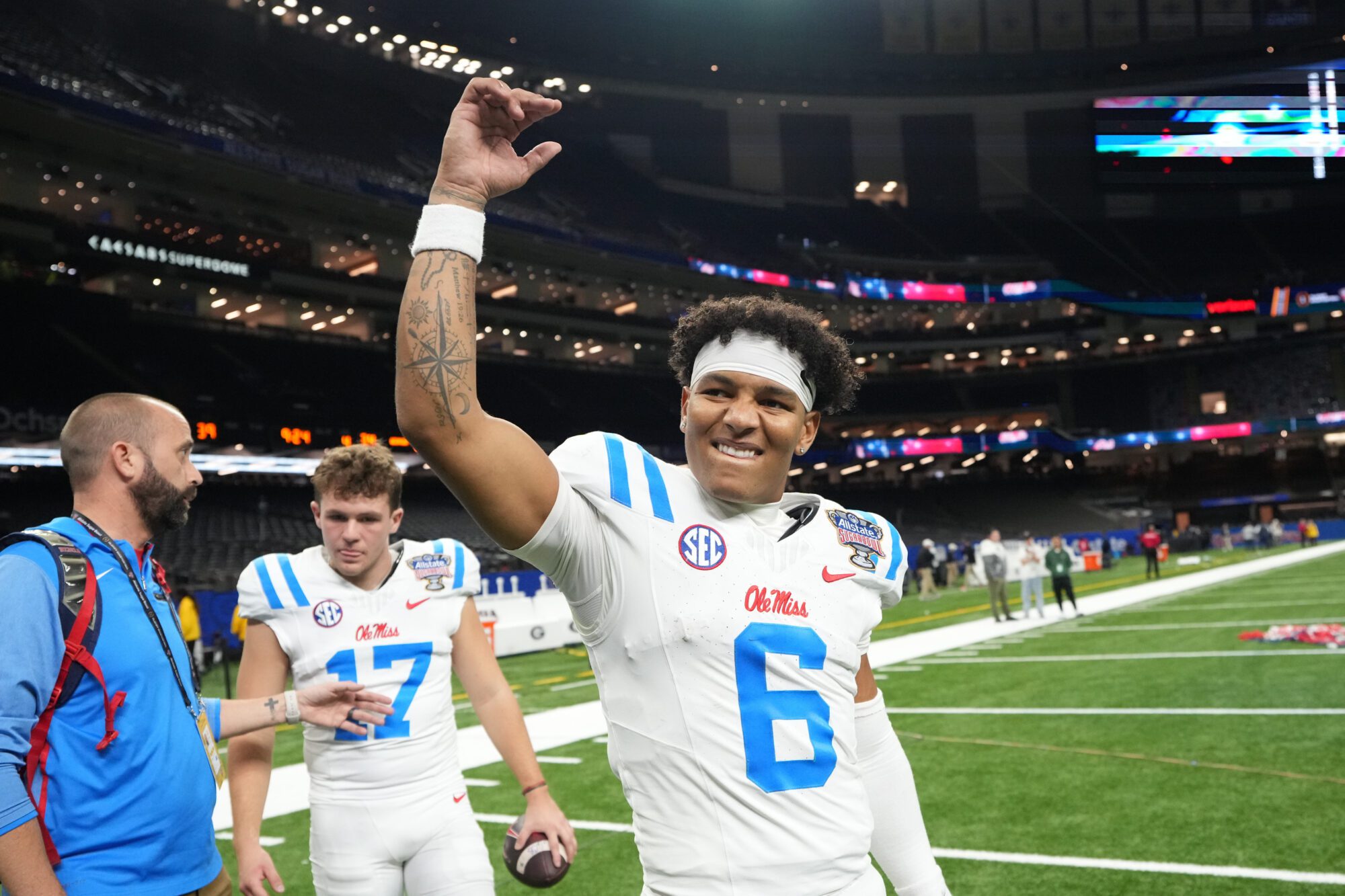
- “It’s not easy being green.” – Kermit the Frog
Jim Henson, co-founder of Muppets, Inc., is known worldwide for his creations, most of which were introduced via public television.

A product of the Mississippi Delta, Jim was born in Greenville, MS in 1936 and spent his childhood growing up in Leland. In his teens, he moved with his family to University Park, Maryland. Jim’s interest in puppetry began in high school. While he was a freshman at University of Maryland in College Park, he developed a short form comedy television program called Sam and Friends for WRC-TV in collaboration with Jane Nebel, who was a senior at the University.
Jim and Jane married in 1959 and moved to New York, where they worked together producing coffee commercials and developing experimental films. He and Jane created The Muppets, and soon The Jim Henson Company joined forces with Sesame Street, a children’s educational program. Characters on the show included Kermit the Frog, Miss Piggy, Rowlf the Dog, Oscar the Grouch, Ernie and Bert, the Cookie Monster, and that gigantic yellow bird, Big Bird.
Early inspiration
Perhaps his love for puppets was inspired by his fascination with ventriloquist Edgar Bergen and the puppets by Burr Tillstrom on Kukla, Fran and Ollie, Jim once said that the first television in his family’s home was the biggest event of his adolescence.
Jim’s first exposure to television production was at age 18, when he began working for WTOP-TV in Washington, DC. Jim was a senior at Northwestern High School in Hyattsville, Maryland. While working at the television station, Jim checked out books from the library on puppet-making and he created puppets for The Junior Morning Show, a Saturday morning children’s show.

When he enrolled at University of Maryland, Jim’s intention was to major in studio arts, with plans to be a commercial artist. But while taking a puppetry class, he was introduced to craft and textile courses offered in the school of home economics. He ended up graduating in 1960 with a Bachelor of Science degree in home economics.
While in college, Jim spent several months traveling in Europe. He was inspired by the puppet performers there, who viewed their work as a true art form.
Jim stayed on at WRC after he graduated college, until Sam and Friends ended in December 1961. During his time working on the show, Jim pioneered new techniques for puppetry in television. From the way the puppets were shot, allowing the puppeteer to work off-camera, to the way the puppets were made to be more flexible, Jim brought emotion to puppets that were previously emotionless. Instead of manipulating puppets with strings, as with a marionette, he used rods. He also allowed for mouth movements and lip-synching to match dialogue.
When Jane and Jim began having children, Jane quit as Jim’s business partner to stay home to raise the kids. Writer Jerry Juhl and puppet performer Frank Oz replaced her in 1963.
Throughout the 1960s and 70s, Jim worked on commercials and children’s projects. Guest appearances on shows including Steve Allen’s, Jack Paar’s and Ed Sullivan’s helped increase exposure to Jim’s puppetry work, which led to even more commercial work. Selling things by making people laugh became a winning formula for advertising agencies who utilized Jim’s Muppets in their ads. Brands including Royal Crown Cola, La Choy, and Frito-Lay all had memorable advertisements featuring Muppets.
Can you tell me how to get to Sesame Street – and beyond?
The turning point for the Muppets came in 1968 when Jim was contacted by Joan Ganz Cooney at the Children’s Television Workshop. Impressed by the creativity of Jim’s team, Joan asked if his team would be willing to work full-time on a new show in development called Sesame Street.
The show debuted on public broadcasting stations in markets around the country in 1969. Jim performed the characters of Kermit the Frog, who appeared as a roving television reporter, as well as game show host Guy Smiley, and Ernie (pre-Bert).
Sesame Street brought the Muppets into the national spotlight. They also appeared on the first two seasons of Saturday Night Live in 1975 and 1976, which made the Muppets “cool” to an older audience.
In 1976, Jim moved his creative team to England to tape The Muppet Show for television. It was on that show that Miss Piggy, Gonzo the Great, and Fozzie Bear came into being, along with a character called Animal. While making the show, Jim realized Kermit was his alter ego, although Kermit’s personality was a bit bolder than Jim’s, who once said, “Kermit can say things I hold back.”
Jim took the Muppets to the big screen in 1979 with the feature film The Muppet Movie. A song from the movie, sung by Jim via Kermit, Rainbow Connection, hit the Billboard Top 100 at number 25, firmly ensconcing the Muppets as part of popular culture. The film was followed by The Great Muppet Caper, released in 1981.
In 1980, Jim stepped away from his own projects to join make-up artist Stuart Freeborn to create the character of Yoda for George Lucas’ The Empire Strikes Back. He worked on the appearance and articulation of the character. Jim brought in Frank Oz to perform the role on that and subsequent Star Wars films.
That opened the door for Jim and Frank to get into fantasy films that moved away from the Muppets. They co-directed The Dark Crystal in 1982, which received critical acclaim. He didn’t turn his back on the Muppets – Frank Oz directed The Muppets Take Manhattan in 1984, which grossed over $25 million and ranked as one of the year’s top forty films.

In 1986, Jim directed Labyrinth, starring David Bowie. While it eventually became a cult classic, the movie was not a box office hit, which was demoralizing to Jim.
Jim continued creating children’s programming into the 1990s, including Fraggle Rock and Muppet Babies. He also created an Emmy award-winning show called The StoryTeller, based on folklore and mythology.
By 1990, Jim had sold his company and characters (except those on Sesame Street) to the Walt Disney Company. He went on to produce a television special, The Muppets at Walt Disney, along with an attraction, MuppetVision 3D for Disney-MGM Studios.
Jim and Jane had five children, all of whom began working with Muppets at an early age. He died on May 16, 1990 from complications stemming from strep throat.
Jim’s daughter, Cheryl, serves as the president of the Jim Henson Foundation, with a mission to promote and develop the art of puppetry in the United States.
Jim Henson and his work is memorialized at the The Birthplace of the Frog: An Exhibit of Jim Henson’s Delta Boyhood, located in Leland.











